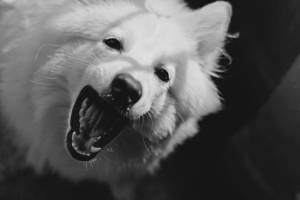
Understanding the Root Cause of Aggression
Before diving into training methods, it’s crucial to comprehend the factors that could trigger aggression in dogs. Aggression can stem from fear, territoriality, or even past traumatic experiences. Genetic predispositions, medical issues, and lack of socialization can also play a significant role in a dog’s aggressive behavior. Identifying the underlying cause is the first step toward addressing and modifying this behavior effectively.
Seeking Professional Guidance
Training an aggressive dog requires expertise and patience. Engaging a professional dog trainer or a certified behaviorist can provide valuable insights tailored to your dog’s specific needs. These experts can assess your dog’s behavior, create a personalized training plan, and offer guidance on implementing effective techniques. Their experience and knowledge can make a substantial difference in managing and modifying your dog’s aggressive tendencies.
Positive Reinforcement Training
Positive reinforcement is a powerful tool for reshaping a dog’s behavior, including aggression. This training method focuses on rewarding desirable behavior with treats, praise, or toys, thereby encouraging the dog to repeat these actions. By positively reinforcing non-aggressive behavior, such as calmness and obedience, you can gradually diminish the dog’s aggressive tendencies. Consistency and patience are key when employing positive reinforcement techniques.
Implementing Behavior Modification Exercises
Behavior modification exercises are designed to desensitize an aggressive dog to trigger situations and help them develop alternative, non-aggressive responses. For instance, counter-conditioning involves associating the trigger with positive experiences, gradually changing the dog’s emotional response. Desensitization involves exposing the dog to the trigger at a low intensity, progressively increasing exposure as the dog becomes more comfortable. These exercises, when implemented correctly and patiently, can significantly reduce aggressive behavior over time.
Establishing Clear Boundaries and Leadership
Providing clear boundaries and assuming a leadership role is crucial when dealing with an aggressive dog. Dogs thrive in environments where the hierarchy is clear, and they understand their place within the pack. Consistent rules, boundaries, and a confident, assertive leadership style can help alleviate anxiety and uncertainty in the dog, thereby reducing the likelihood of aggressive outbursts. Establishing a sense of security and predictability is fundamental in managing and modifying aggressive behavior.
Maintaining Patience and Consistency
Patience and consistency are fundamental when training an aggressive dog. Changing ingrained behavior takes time, and setbacks are not uncommon. It’s essential to remain patient and avoid responding to aggression with anger or punishment, as this can exacerbate the issue. Consistently applying the training techniques, providing a secure environment, and showing understanding toward the dog’s challenges are crucial elements in the journey toward modifying aggressive behavior.
Training an aggressive dog is a demanding yet rewarding endeavor. By understanding the root causes of aggression, seeking professional guidance, employing positive reinforcement, implementing behavior modification exercises, and establishing clear boundaries, you can make significant progress in reshaping your dog’s behavior. Remember, each dog is unique, and the training process may vary. With patience, consistency, and empathy, you can help your aggressive dog become a well-adjusted, balanced companion.






